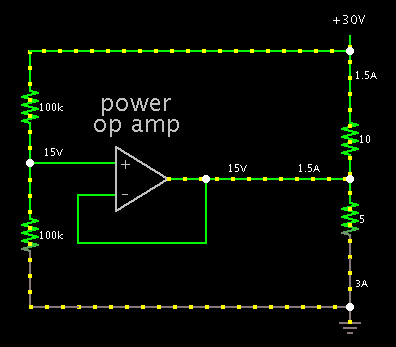Follow along with the video below to see how to install our site as a web app on your home screen.
Note: This feature may not be available in some browsers.
One way is to split the 30v in two identical halves by a 1:1 voltage divider, making it 30v - 15v - 0v source. Then, keeping 15v as common, use LM7815 between 30v - 15v potential difference & LM7915 between 0v - 15v potential difference.
